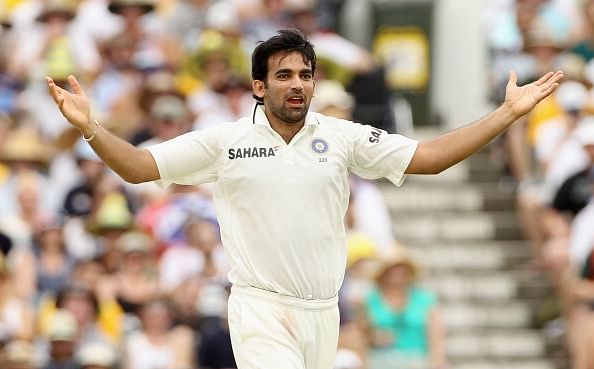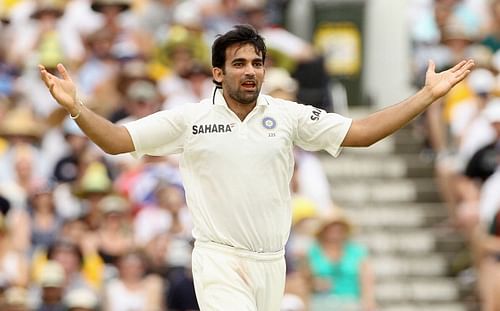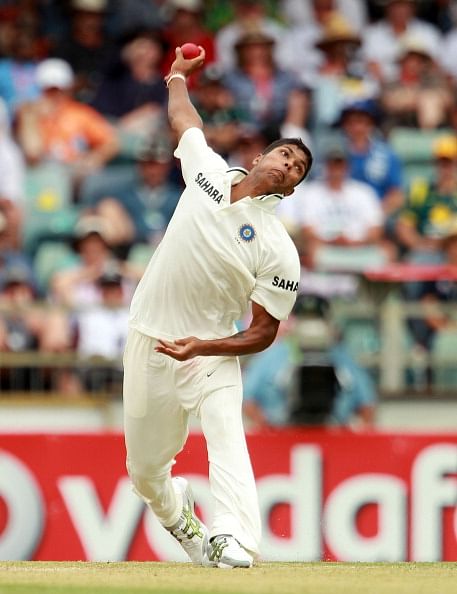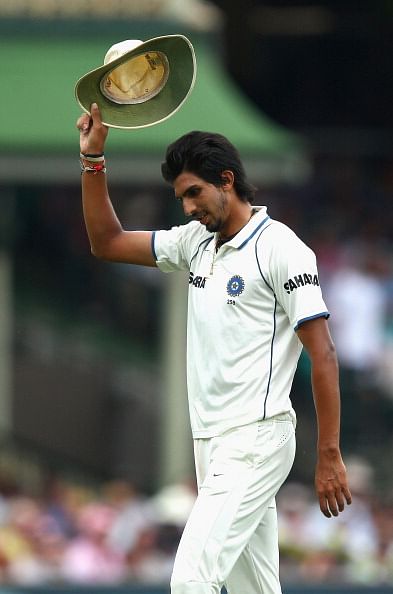
India will go nowhere without better bowling

It’s the bowling, and not batting India will be concerned about. Yet again.
The recent retirements of stalwarts Rahul Dravid, India’s impenetrable rock and maker of 36 test hundreds, and VVS Laxman, the sublime artist and scripter of miraculous second innings revival epics, would understandably have depleted India’s batting stocks. Sachin Tendulkar, heartbeat of the nation, with a century of international centuries to his name, is still around. But, at 39 the Master Blaster’s powers appear to be fading, and the New Zealand seamers were able to rearrange his furniture at every turn he had at the crease this last series. Yet with youngsters like Cheteshwar Pujara, Virat Kohli, Ajinkya Rahane, Rohit Sharma, and under-19 captain Unmukt Chand, India’s batting should be in capable hands for years to come. It is the bowling unit that is in need of urgent attention.

Umesh Yadav is pacy, but still has a lot to learn at the top level
The pace bowling department has hardly ever been top class. Zaheer Khan can be a master practitioner when swing is available, but his career has been blotted by injury and the gentle pace at which he now operates means his bowling can now be only termed as steady when batting is straightforward. His fast bowling partner against the Kiwis, Umesh Yadav, is young and possesses significant pace and promise, but with only a handful of tests to his name he is not yet a finished article.
The other pacer in the most recent test squad, Ishant Sharma, is yet to fulfil his early potential. He first came to public notice during the 2007/2008 tour of Australia when his blistering assault on Ricky Ponting had the Australian great prodding and poking and cricket aficionados licking their lips. But inconsistency and injury has followed the lanky 24 year-old from Delhi and only occasionally has he been able to summon the pace and bounce that marked his emergence on the scene.
India recently completed a two-test series sweep against New Zealand in which their bowlers strangled the Kiwis line-up, dismissing them for under 250 on three occasions, and with the spinners taking 31 of 40 wickets. But India’s twirlers are always threatening at home where conditions favourable to spin often have them looking like tigers toying with their prey. Ashwin and Ojha, who decimated the unfortunate Kiwis, similarly persecuted the West Indies batsmen in their previous home series, snaring 42 of the 60 wickets to fall.
In foreign conditions, however, they have found it much more difficult to restrict their opponents. When India surrendered their number one test ranking in England last year, the hosts ran up scores of over 450 on four occasions, and in three of those cases they declared. Later, when they were humiliated Down Under, the Aussies had the luxury of declaring three times in the four tests, twice for scores in excess of 600.
To be fair, the batsmen also underperformed during the aforementioned away skirmishes. Only Dravid stood out in England, scoring 461 runs including three centuries at an average of over 76. Far behind him was Tendulkar, who managed 273 runs. Nobody else made over 220. Other senior players like Gautam Gambhir and Virenda Sehwag, both returning from injury, looked far from being the world class batsmen that they undoubtedly are, averaging only 17 and 10.25 respectively.

Nowhere close to fulfilling the prophecy of 2007/08
Australia had always been a happy hunting ground for the likes of Tendulkar, Dravid, Laxman and Sehwag. Yet on the 2011/2012 visit they could find no answer to the Australian pacers. In eight innings the visitors had one score over 300, while falling below 200 on three occasions.
Nevertheless, most agree that the batting is situated on a more stable ground. Kohli has already scored a test hundred in Australia and few doubt that he is equipped to fight tough battles on foreign fields. Others like Pujara and Rohit Sharma have talent oozing from their every pore and are expected to serve their country well in the coming years.
So while the batting might not occupy (at least not yet) the rarified heights it did for the past decade or so, it will comfortably hold its own. If India is to challenge the top teams in their own backyard, however, the bowling unit has to be strengthened. The problem is that, not only is the current crop not up to the task, the horizon also seems bleak as far as emerging bowling talent is concerned.
India will still be able to clobber the lower ranked test sides when they visit, and a brilliant display by Zaheer Khan or Umesh Yadav might spur them to an away win every now and then; or their spinners might find luck upon a raging turner and overpower the opposing batsmen. But, consistency is the hallmark of a good team and there is just no way their current bowling department allows them that quality.